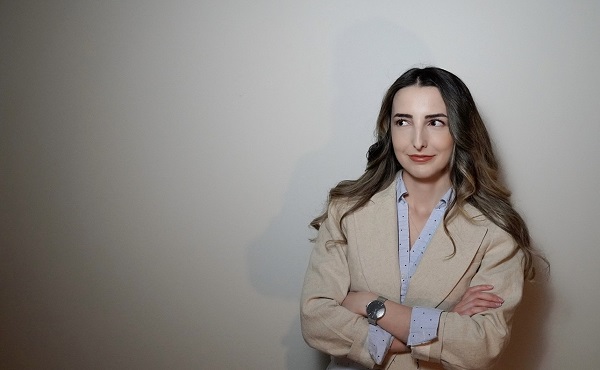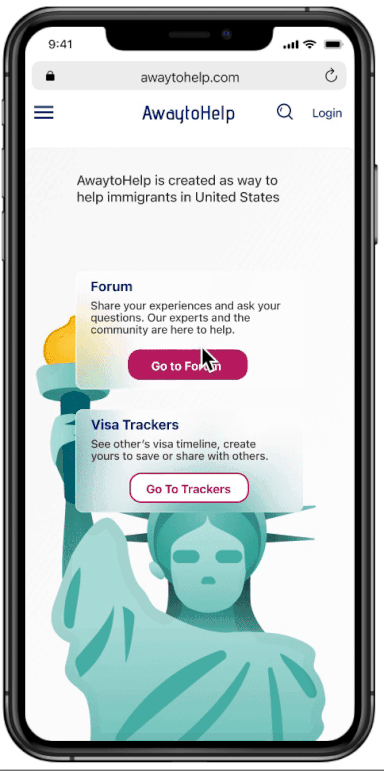
A car enthusiast who modifies her car for fun–adding underglow, vinyl wraps, and lowering the suspension for better aerodynamics–Asel Yaşacan even has an Instagram account dedicated to her beloved vehicle.
While working as a full-stack developer, Asel Yaşacan enjoyed problem-solving and training junior developers. The part she didn’t like about her job? Writing code. As a developer, she would write code based on mockups she received from the design team. “I realized that I wanted to be the one making decisions rather than programming,” she said.
She spent a few years working as a technical trainer, helping over 120 computer science graduates become full-stack web development consultants for clients including Microsoft, Tesla, and PwC. Once she gathered the courage to transition into a career in design, she enrolled in Springboard, and the rest is history. Now, she’s a product designer at Capital One.
I was a full-stack developer and then I became a technical trainer at a consulting company. My job was to train fresh graduates or people who wanted to pivot into a career in web development. So I trained them on certain technologies, like SQL, HTML, CSS, JavaScript, web development frameworks, and the software development life cycle. I also prepared them for behavioral and technical interviews to jumpstart their careers.
I’ve always been interested in visual design. When I was working as a developer, I would receive mockups from the product owner. Instead of getting the designs and developing them, I wanted to be the person who made those design decisions.
I’m always looking to improve my skills and I believe learning never ends. I really enjoy my new job at Capital One and I’m learning a lot. In my personal life, I want to help people who are trying to get started in UX, since I understand the struggle.
In my new role, I get to be involved in all phases of the UX design process–from research to testing until the product is delivered or handed off to developers. I’m really happy with where I landed.
Capital One is a huge company, and I’m working on a lot of different projects at the same time. So there’s a lot of planning and collaborating with other product partners. When you’re studying and working on your own projects, you make all the design decisions and you don’t have to prove them to anyone. But when it comes to real-life projects, you have to defend your design decisions.

Before I found a job, I was reading a lot of articles about the industry. During my weekly calls with my mentor, I would always ask questions about what their day-to-day role looks like. What are the challenges they face? How do they solve those problems? I was aware that the real world would be very different from the learning environment, so I tried to prepare accordingly.
I compared a lot of different boot camps. Since I was working full time, the self-paced curriculum and the mentorship program were the key reasons I picked Springboard.
My mentor was Michelle McDonald [senior product designer at Upwork]. Our relationship was great. Sometimes I still text her. During my job search I reached out to her a lot. She would always lift me up. She gave me a lot of emotional support as well as technical support, and I really appreciated that. At the end of our calls I would always feel happier and more motivated.
My most valuable project was an app I created called AwaytoHelp. As an immigrant, I struggled a lot when I first came to this country. I was looking for resources relating to legal issues, healthcare, and understanding my work authorization. So I created a portal where people could access this information and also communicate with other immigrants about things like visa processing, Green Cards, and so on.
Springboard advised us to choose a project that we were passionate about, and this is what I came up with.

When I was doing the research for this project, I discussed it with a couple of my engineer friends who are also immigrants. We talked about turning this into a real project, but we never came back to it. So maybe one day, if we have time, we’ll work on it again.
I always wanted to work for a financial services company, and Capital One was one of them. Initially, I applied for a different position than the one I’m in now. Over a month later, the recruiter reached out to me. She asked if I would be willing to interview for another role. I said, “Yes, of course.”
During that time, I was also interviewing with another big company. I knew the role at Capital One was a better fit, so I asked if we could speed up the interview process a little bit. They were very understanding. We rushed through the interviews and it was a lot of stress, but I’m really happy with the result.
The most valuable part was learning from mentors that have been working in the industry for years. They know everything. Also, the curriculum was set up really well–from covering every stage of the UX/UI design process to career-related articles, and action items that we needed to complete, I think everything was well-structured.
Find what you enjoy doing and see if you can turn it into a career. Let’s say you enjoy motorsports; that doesn’t mean you can become a professional racer. It has to be something feasible. If you’re switching careers, see if your skills are transferable.
Lastly, before committing to a bootcamp, do your research and try studying using free materials you can find online so you can determine if you’re really interested in this field or not.









